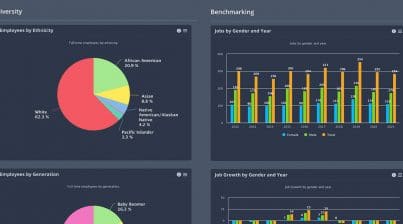There’s a shift happening in HR right now.
Traditionally, HR is looked at as an administratively heavy support role for the organization’s employees. Benefits, payroll, recruitment, and performance management are the day-to-day responsibilities of the HR team. This is a very operational-based HR plan. It ensures the everyday tasks are complete to support the business. Which does need to happen.
Technology, AI, and automation pushing change
Unfortunately, being just operational isn’t enough anymore. Technology has changed the way we do business. Computers, automation, and artificial intelligence have all optimized processes to make them more efficient.
For example, 95% of a bank tellers job was handling physical cash. Now in the post-ATM era where we can even send money electronically through many apps, bank tellers jobs have changed. They’ve become more focused on financial advising, loan management, or larger business accounts. Automation has allowed the traditional function of a bank teller to be more strategic.
Automation and AI have also made an impact on HR’s tasks as well. The multitude of HR systems has decreased the need for large operational teams to process paperwork. Most HR information systems (HRIS) have a self-service feature where employees can update their addresses or direct deposit information. Applicant tracking systems (ATS) are coming with AI to pre-screen resumes before even a human recruiter looks at it.
Making the shift
With all the time technology has given back to the HR team, it’s time to shift to being more strategic. Being strategic means taking a more proactive versus reactive approach to HR’s initiatives. It also requires alignment with the organizations’ strategic goals. To achieve that alignment, HR needs to be a business partner.
As a strategic business partner, HR focuses on employee engagement, org culture, employer branding, succession planning, and workforce strategy. Data, metrics, analytics, and systems are used as a strategic tool to support these initiatives. The strongest business case is backed by numbers, which is what the company’s senior leaders look for.
But, it can be difficult for HR to break out of the perception that it is just an operational and administrative function. Unfortunately, not all business leaders see the value of a strategic HR team. There are a few things you can do to break down those views.
First and foremost, understand the business.
Know what products and services the business offers and what your employees do to get the job done. Also, look externally to understand the industry, market, and competitors. This is key for benchmarking your internal practices to best practices.
Then, listen to the needs of your business, but not just from an HR lens. HR tends to only be looped in when there’s a “people problem”. Like employee performance issues or high turnover rates. Talk with your business leaders and ask them what’s going on. Take the lead on suggesting a solution. Maybe they’re experiencing a slow down in sales in one region. You can make suggestions on workforce development as the leader may not have even seen it as a human capital issue.
HR can provide a lot of strategic value to the c-suite and senior business leaders. It may be an uphill battle, but once achieved, there’s a lot of value-added.
As a strategic business partner, data, metrics, and analytics are important. An HR dashboard is a beneficial tool for supporting that function. It automatically calculates your metrics to create easy-to-understand visualizations. It takes the time and effort out of your hands, so you can work on the solutions.
Sign up today for a free demo of our automated HR dashboard.












